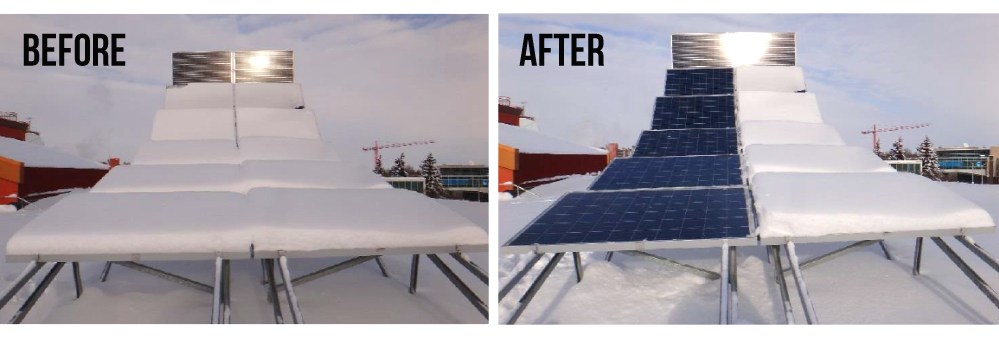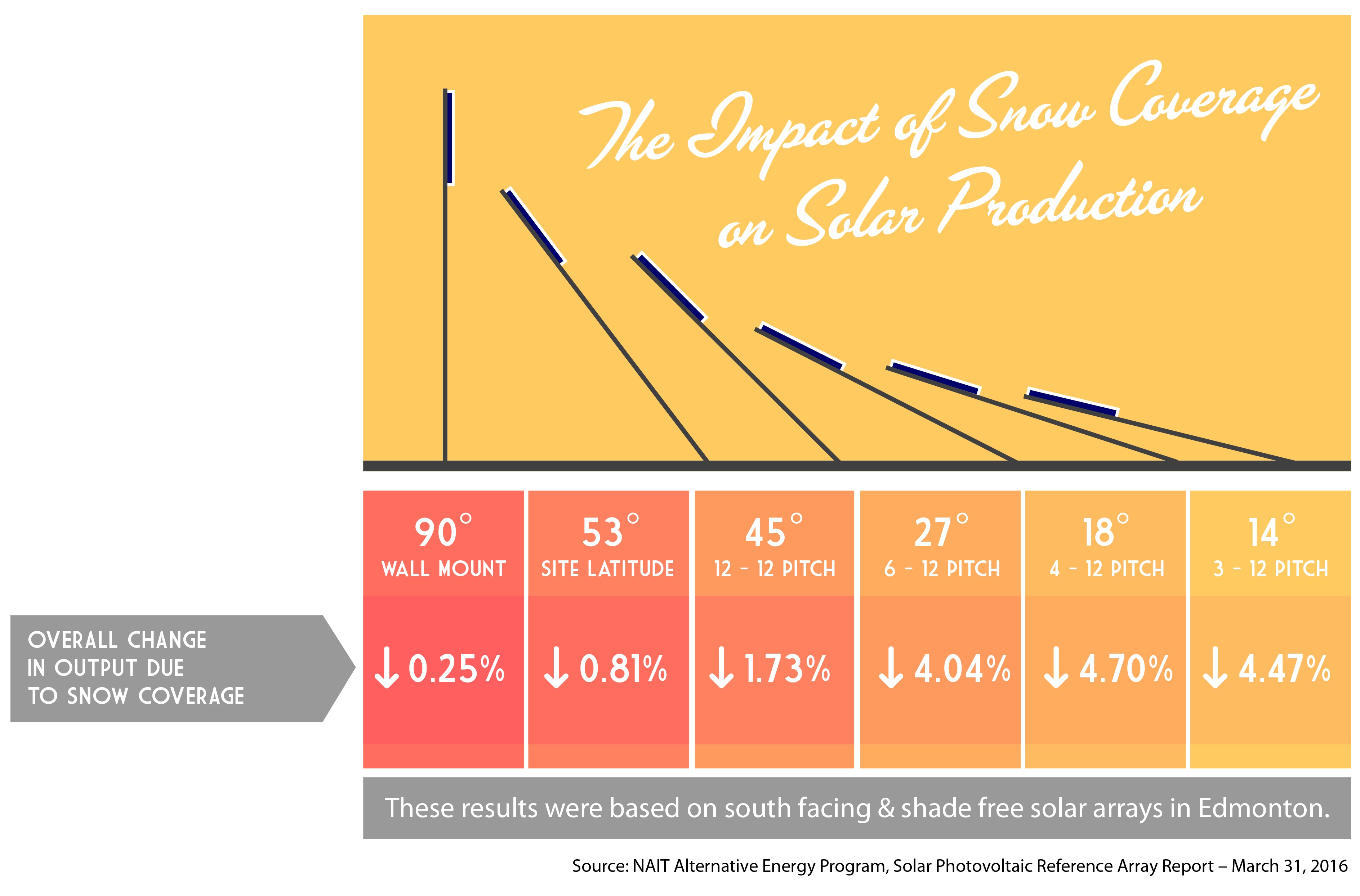We have continued to assure our customers that snow has a very minimal impact on solar production for these two main reasons:
1) With a grid-connected solar PV system, the total annual energy production from the system is most important. The majority of the energy produced by a solar PV system in Canada is produced from March to October. Lost energy production due to snow during the darker months of November to February is not as important.
2) Snow will naturally melt off the solar modules. There are a number of factors that affect when and how quickly the snow will melt off. Read more about it here.
Northern Alberta Institute of Technology (NAIT) has gone a step further to put an end to this snow coverage myth! The Alternative Energy Program of NAIT ventured on an extensive study to track individual module performance based on the most common installation angles and the impact of snow on overall performance. The study was conducted over a span of five years (started in April 2012). They installed two test systems, one on NAIT’s South Learning Centre and the other on the City Hall roof in Edmonton. The test systems were constructed to include the following racking angles: 14°, 18°, 27°, 45°, 53° (site latitude) and 90°.
To track and compare the impact of snow coverage on solar production, they immediately removed snow from the left column of modules, after every snowfall or before sunrise the following morning.

In 2016, they published the updated results of their study in this detailed report. You will be surprised to find that snow has a negligible impact (less than 5%) on the overall annual performance of your solar array. Hurray! 1 for Solar, 0 for Snow!

*Please note that locations further south of Edmonton with less snow and more chinooks would likely have significantly less production loss.

